Kompot: Basic Information
Pronunciation
Alternative Name(s)
Drink Type
Mealtime
Popular Variations
Kompot: Origin and Region
Origin
Continent’s Region
Country’s Region
Associated Region
Kompot: Ingredients and Preparation
Main Ingredients
Main Preparing Method
Preparation Process
Kompot: A Deep Dive
Cultural Significance
Taste
Texture
Aroma
Color
Serving Style
Serving Temperature
Accompaniment
Occasions
Calories
Popularity
Popular Similar Drinks
- Uzvar
- Punch
Popular Dining Area
Kompot is a traditional, non-alcoholic sweet beverage originating in Europe, particularly Eastern Europe and the Balkans.
Historically, it was a common method for preserving fruit during the winter season in Southern and Eastern Europe around the 15th century.
The beverage is made by simmering various fruits in water, sugar or raisins to add sweetness. Common fruits for kompot are apricots, peaches, strawberries, apples, plums, raspberries, sour cherries, or rhubarb.
Kompot is often enjoyed as a thirst-quencher during hot months, but it’s also a comforting drink in the colder season.
Some kompot variations also include spices, like cinnamon or vanilla, especially when served hot during winter.
There are also alcoholic versions of kompot with the addition of beer or alcohol, like vodka, but they are not traditional recipes for this drink.
Kompot is a well-loved option in many countries, including Europe and Asia. However, drinking kompot has its pros and cons.
Plus, though the term “kompot” translates to “compote,” kompot and compote are different, which I’ll explain later. So keep reading to learn more!
Key Points
Kompot Images
Which Countries Are Known For Their Popularity Of Kompot?
The fruit-based drink kompot is especially popular in Europe in several regions, such as:
- Eastern Europe: Russia, Ukraine, Belarus, Moldova, Bulgaria, and Romania.
- Central Europe: Poland, Czech Republic, Slovakia, Hungary, and Slovenia.
- Northern Europe: Estonia, Lithuania, and Latvia.
- Southern Europe: Bosnia and Herzegovina, Croatia, Macedonia, Serbia, Albania, Kosovo, Cyprus, and Greece.
Moreover, it is also common in Central Asia nations, such as Kazakhstan, Uzbekistan, Turkmenistan, Tajikistan, and Kyrgyzstan.
In West Asia, you can find them in Armenia, Azerbaijan, Georgia, and Turkey.
Next, let’s find out the good and not-good sides of drinking kompot.
Pros And Cons of Drinking Kompot
Here is a table of some brief good and bad impacts of kompot.
Pros
Cons
Now, let’s continue your reading with some distinctions between the often-confused terms “kompot” and “compote”, which refer to two distinct food items.
What’s The Difference Between Kompot and Compote?
Here is a table listing the differences between kompot and compote.
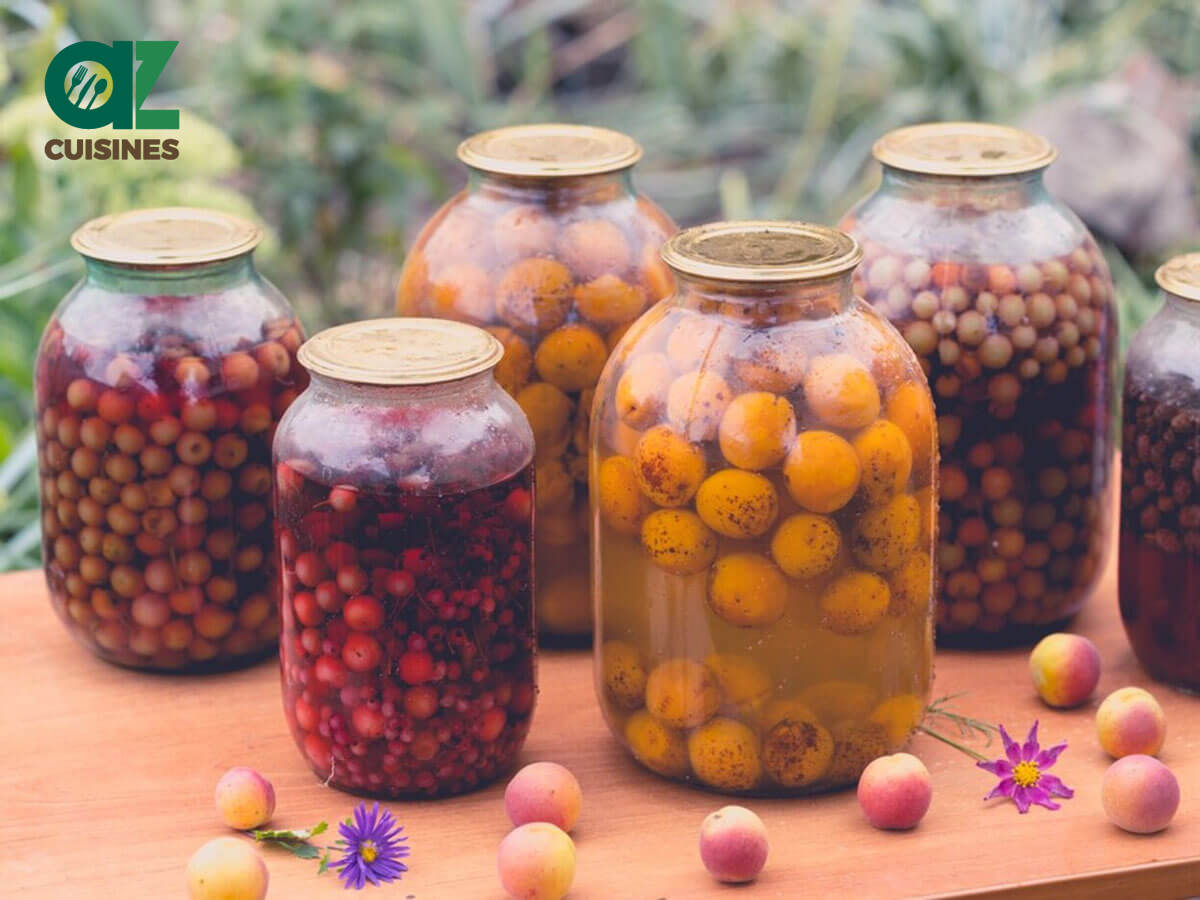
Kompot
Origin: Europe, particularly Eastern Europe and the Balkans
Ingredients: Made by cooking various fruits in a large volume of water with sugar (or raisins) and sometimes spices are added
Consistency: More liquid and beverage-like
Serving Temperature: Can be served hot, cold, or at room temperature
Usage: As a beverage
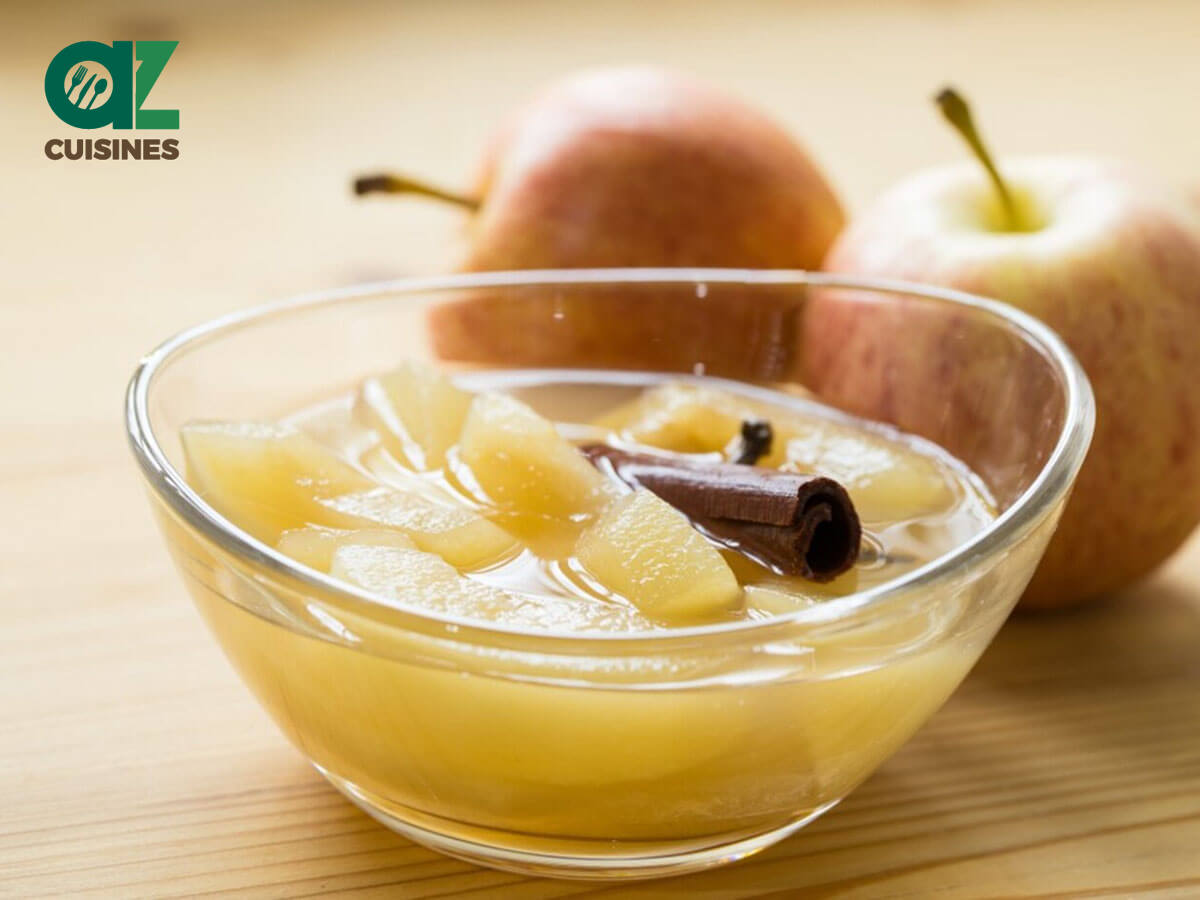
Compote
Origin: Medieval Europe
Ingredients: Made of whole fruit or pieces in sugar syrup. Spices like vanilla, lemon or orange peel, cinnamon, cloves can be added
Consistency: Often has a thicker consistency due to the sugar syrup
Serving Temperature: Can be served warm or cold
Usage: As a dessert
Before I wrap up the discussion about kompot, let’s take a moment to address some commonly asked questions about this European beverage.


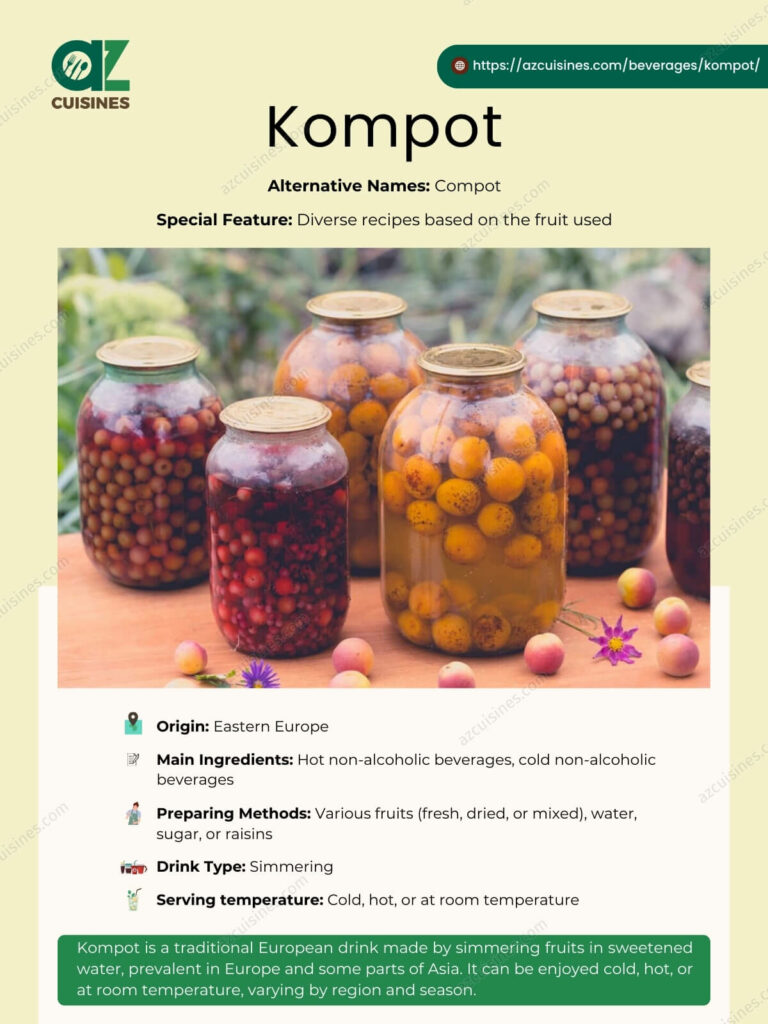
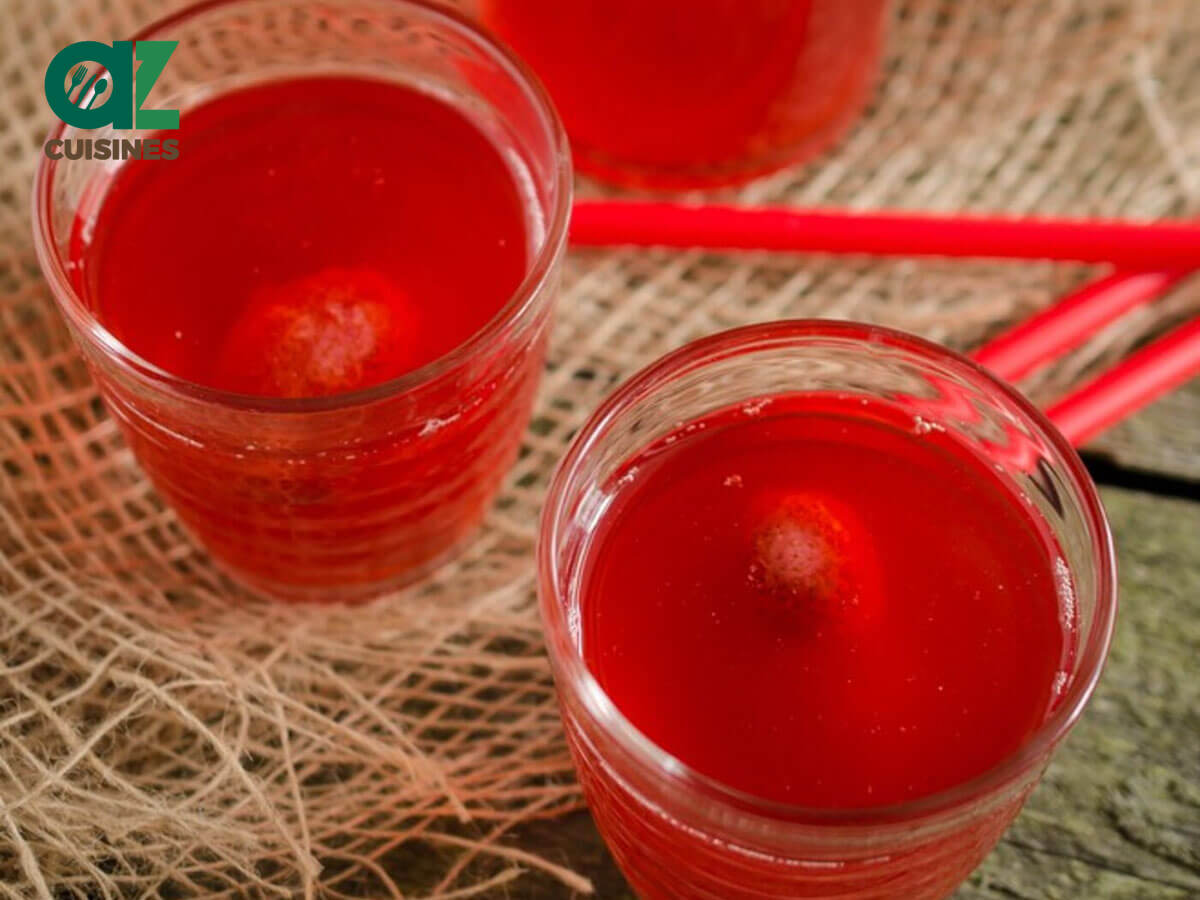

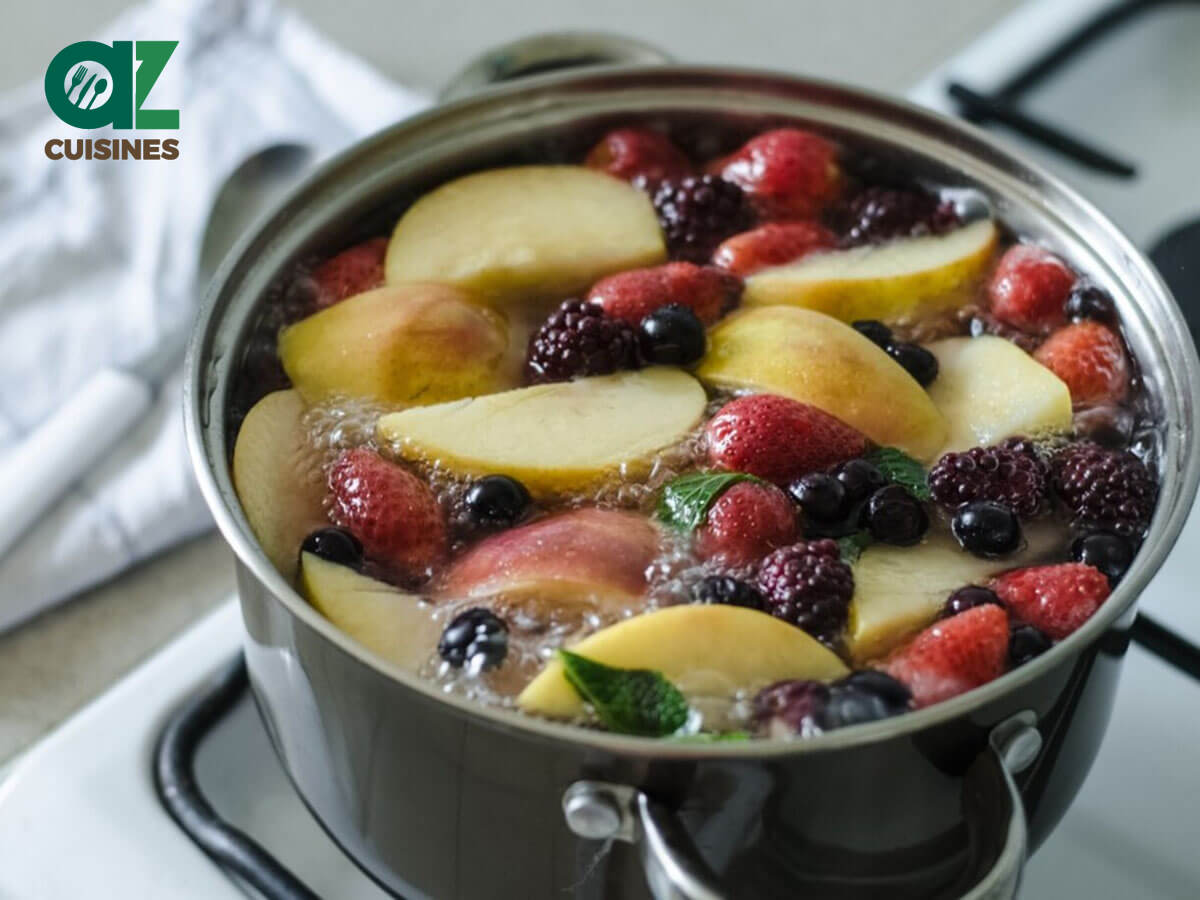

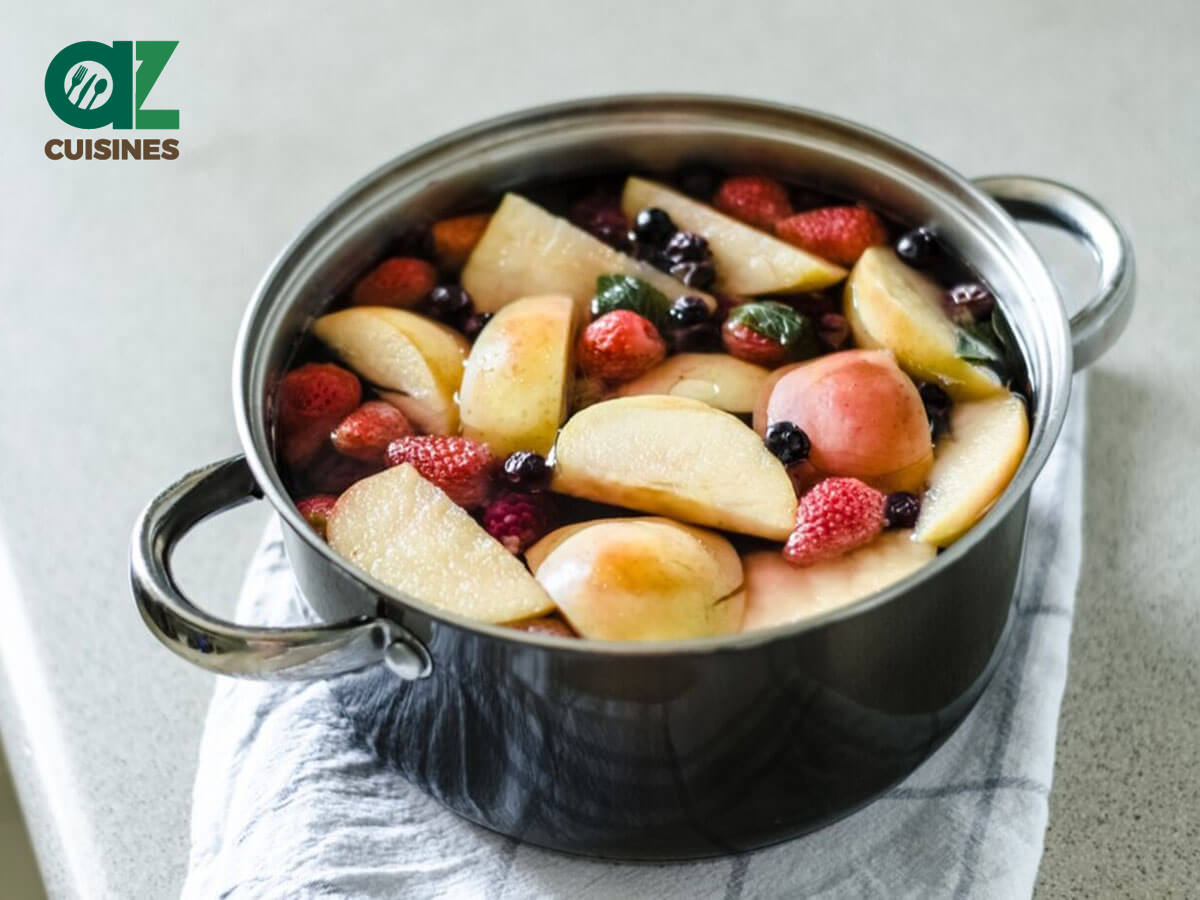
Adam Sam
Senior Food and Drink Editor
Expertise
Food Writer & Recipe Developer, Recipe Tester, Bartender, Cooking-video Maker, Editor In Chief
Education
Adam Sam, an experienced food writer and recipe developer, is passionate about blending diverse culinary traditions, national dishes, and innovative beverages, showcasing his proficiency in both traditional and modern recipe testing.
As the Editor-in-Chief, he elevates culinary content from street food to fine dining, focusing on Western cuisine and types of drinks at azcuisines.com, and is professional in creating engaging cooking videos that simplify complex dishes and ingredients.
His passion for food is evident in his writing, where he uniquely merges various cultures, traditions, and contemporary trends, skillfully combining classic recipes with modern cooking methods.